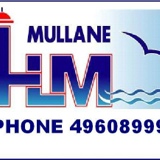Information
-
Audit Title/Client/Date (reverse order)
-
Prepared by
-
Location
-
Personnel
EVALUATION
-
Are all activities performed in compliance with an accepted JSEA that is still adequate for the current tasks & conditions?
-
Do all persons appear to understand the requirements of the JSEA & have signed off?
-
Are limiting and indicating devices fitted including motion limiting devices?
-
Are rated capacity limiters provided on all mobile cranes manufactured since 2002 with a maximum safe working load of more than three tonnes?
-
Has a radius indicator been fitted on all mobile cranes that were originally designed with this feature and is the indicator displayed in metres?
-
Are load indicators fitted to all mobile cranes with a maximum rated capacity of more than three tonnes?
-
Are load charts fixed in the operator's cabin or kept in a book, folder or envelope in the operator's cabin?
-
Is the crane operator's manual kept on the crane?
-
Are all operator controls suitably marked to indicate their function & operation?
-
Is there evidence that employee has considered factors that will affect the ability of the ground to provide adequate support such as:
-
The presence of water including when it is mixed with the soil as mud and where it is present under the surface (e.g. underground springs & streams?)
-
The type of ground (e.g. clay, sand, rock or a mixture of these?)
-
Backfilled ground that was previously an excavation trench?
-
Cavities or penetrations in the ground that have been covered but still exist?
-
Continued operation of the crane in one location?
-
Was certification of the ground bearing capacity obtained from a geo-technical engineer before performing a heavy lift?
-
Are timbers or other means of distributing the load placed under the outriggers? Manufacturers of cranes made since 2000 provide documented information on the maximum load & pressure applied by the outrigger foot to the ground for different boom configurations supplied with the crane.
-
Are the outriggers used to level the crane?
-
If working or traveling on a slope, has the employee carried the load on the uphill side of the crane, regardless of direction of travel? Travel on a slope is uup or down the slope, not across the slope.
-
Are crane configurations designed for wind speeds other than 10m/second have the design wind speed marked on the rated capacity chart?
-
Has employee ensured that a dogger is not used to also perform the role of 'spotter' when the crane is operating close to overhead power lines?
-
Before signaling the crane operator to raise the load, did the dogger ensure that:
-
Each lifting attachment, sling & shackle has a safe working load, or working load limit greater than or equal to that of the load and are these attachments suitable for safely handling the load?
-
The hoisting apparatus is correctly applied to the load and the crane hook?
-
No part of the load is loose?
-
The load is properly balanced?
-
The load is not snagged?
-
The load, when it is lifted, will not contact any object or constitute a hazard to any person?
-
Is there a dedicated radio frequency selected for the duration of the crane operations & will work stop if there is a loss of radio communications?
-
Where radio communication is not or cannot be used, were other forms of communication, such as hand signals & bell, buzzer &whistle signals used? Ensure mobile phones are not used for directing mobile crane operations
-
Before starting to hoist the load, did the crane operator or dogger make sure that the hoist rope hangs vertically over the load? As the weight is taken it may be more appropriate to luff up rather than hoist.
-
Did employee ensure that the load did not swing after being hoisted and that tag lines are used as required to control the load?
-
When handling maximum or near maximum loads, did the crane operator take the following precautions after the load as been lifted a few centimetres:
-
Test the hoist brakes?
-
Check the weight recorded on the load weight indicator?
-
Recheck the load chart?
-
Were mobile cranes operated within their engineered design capacity?
-
Except in an emergency, did the crane operator not leave the cabin or control room while a load is suspended from the crane hook?
-
Were all loads supported where possible with dunnage, with the load uniformly distributed over the supporting surface?
-
Were exclusion zones established around mobile cranes & adjoining areas to prevent unauthorized interaction with persons & other plant & were outrigger beams or hydraulic cylinders marked with the hazard striping?
-
Are there any other risks or issues associated with the activities observed?
-
Location of Observation
-
COMMENTS & RECOMMENDATIONS
-
Comments & recommendations to be actioned by
-
Signature of observer














